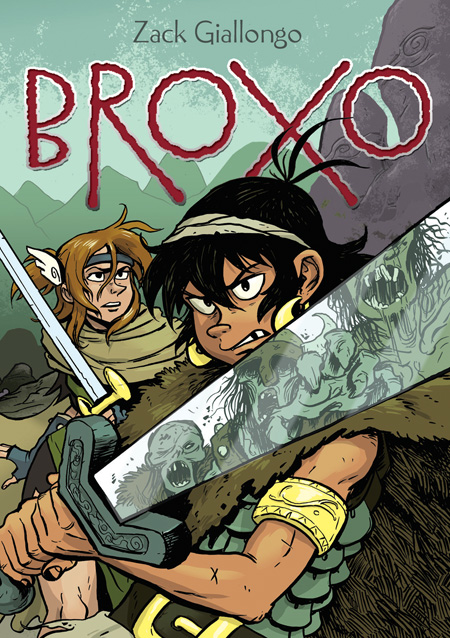It is hard to put into words what exactly Zack Giallongo’s Broxo is about. Oh, on the simplest level it is about a young girl named Zora, a princess who goes in search of the missing Peryton clan in order to strengthen the political union her family is trying to build. She finds only ruins where their civilization should be, empty except for a savage wild child named Broxo accompanied by Migo, a massive beast. The only other people living on the mountain are the witch Ulith, her familiars and the feral creature Gloth. Of course, I said the only other people living there; the undead creepers and the ghost of Grandma don’t count, of course.
Ultimately, though, Broxo is about more than that. It almost seems like it is about the nature of evil, but even that is too trite. It is about mistakes, and how doubling down on those mistakes can make things exponentially worse. Even more, it is about…taboo and power. About boundaries and transgression, trust and crossing lines, and about making things right. Ultimately, Broxo is a fable, a story that doesn’t try to have a moral but instead has…resonance.
I can’t help trying to fit the characters of this graphic novel into a sort of Dungeons and Dragons framework. Probably because I am a big old roleplaying nerd, but maybe because the use of archetypes by Giallongo evokes that sort of mythic core? Broxo winnows the wheat from the chaff, beating down the tired clichés until it finds the kernel inside of them, and then nourishes that to new life.
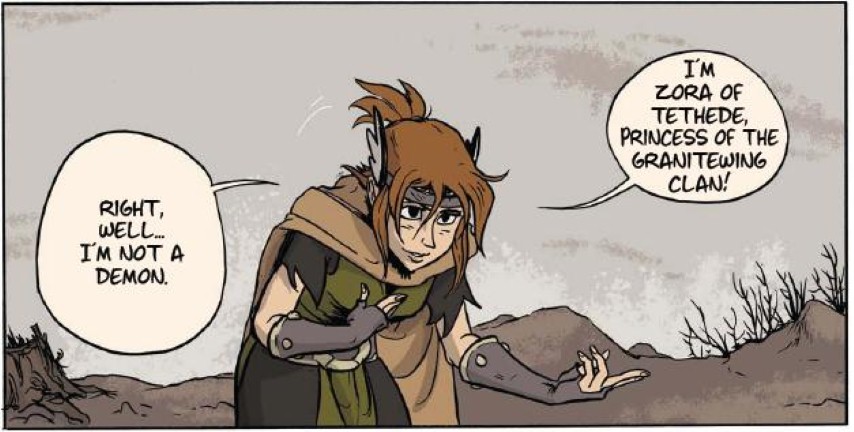
Ulith is easy; with her innate capacity for magic, her familiars—Kol and Krol, though I can only think of The Little Mermaid’s Flotsam and Jetsam—and her flashy evocation of lightning, she’s a sorcerer (or sorceress, if you prefer). Zora, comfortable with a sword and a bow, is the new classic, the Roy Greenhilt-style fighter with a brain. Broxo…well, my first thought was “oh, he’s going to totally be a barbarian,” but throw in his monstrous friend Migo and it looks more like he’s a ranger with an animal companion. Migo himself…is like Lovecraft’s Gnophkeh, Flash Gordon’s Orangopoids, Barsoom’s white apes or Star Trek’s Mugato, a giant white ape-bear with a horn. Whew, now that is a pedigree.
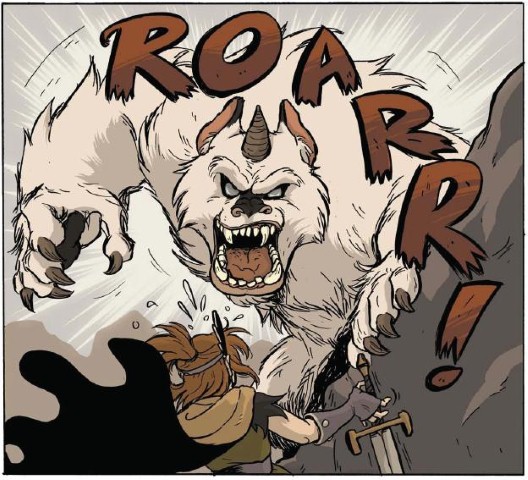
The nearest comparison I can think of for Broxo is Ben Hatke’s Zita the Spacegirl, though they aren’t that similar in tone. What they share, instead, is a sort of…Campbellian scope. Though both of them are relatively small in scale, they check off the points of the Monomyth along the way. Refusal of the Call, Descent Into the Underworld, all of that.
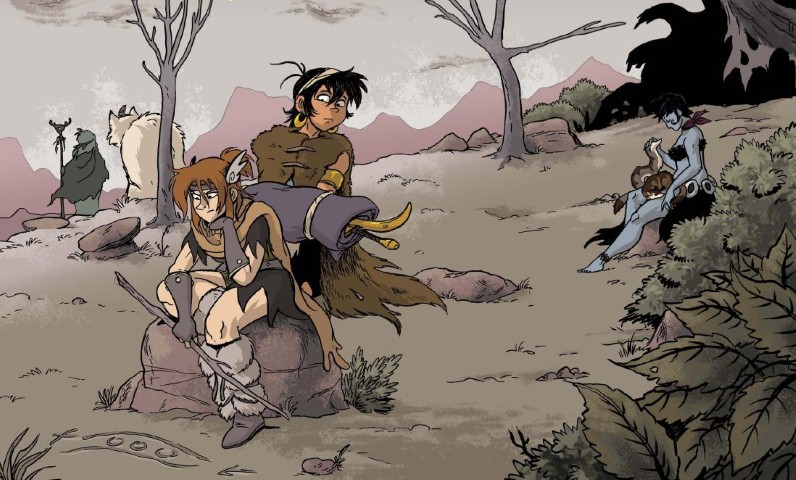
Broxo’s heroes—both the eponymous Broxo and the more interesting Zora—have tutelage under the spectre of Grandma, and if you can’t squint and see the blue ghost of Ben Kenobi there, you aren’t looking. I don’t mean to imply that Giallongo is just sewing together tropes; rather, he is using the threads from many different sources to weave a story together, whole cloth.
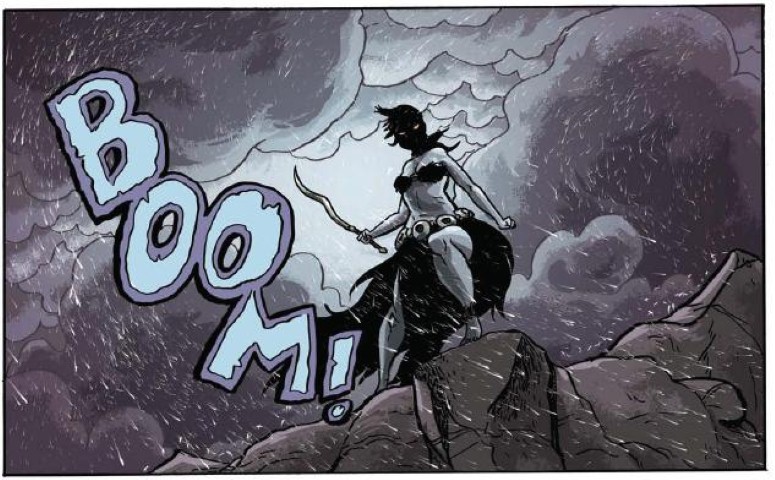
Broxo is mythopoeic. That is the best term for it that I can find. It isn’t sold through exposition or though story, either; that is one of the strong suits of the graphic format, if you can pull it off. Giallongo pulls together a visual library for us to invest with meaning. When the monsterous Gloth stalks and preens, we can see and almost here Rudyard Kipling’s Shere Khan, and we understand on a basic level. It is no shock that Ulith’s name echoes Lilith, and evokes a sense of supernatural, of feminine mystery.
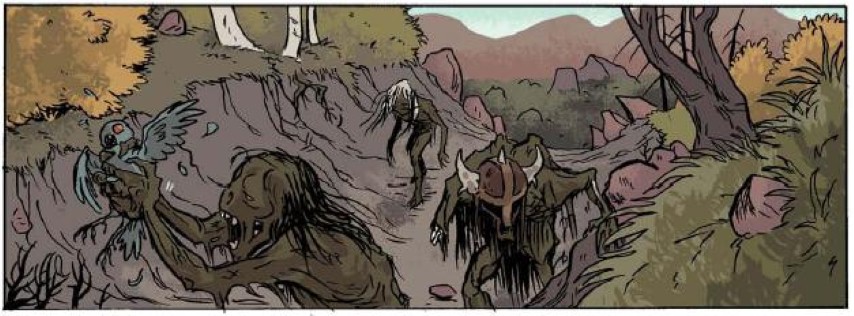
The dead aren’t zombies—zombies are so passé—but rather the walking dead, unquiet souls, a terrible blight that signifies a deeper wrongness. The black stag, tusked and ominous, and leaden with meaning, not the least of it borrowed from Hayao Miyazaki’s Princess Mononoke. Giallongo speaks with cinematic language, with visuals borrowed from a thousand sources, inspired by a thousand more, and those symbols are invested with intuitive meaning.
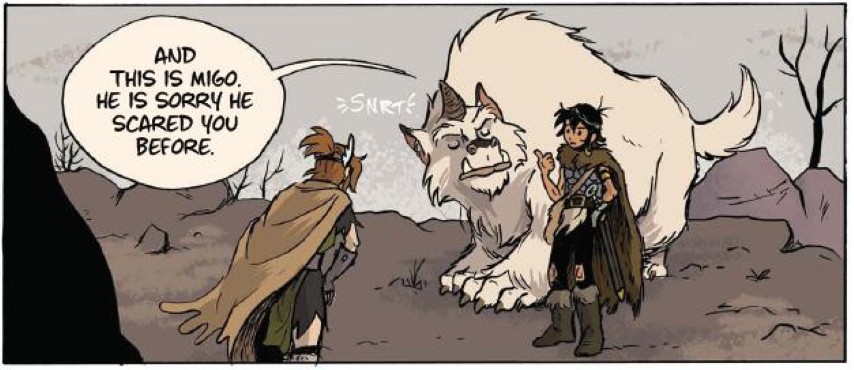
So what do I expect next? I expect Zack Giallongo to write and draw a follow-up, a sequel. It will be called Zora, I hope, and it will detail Zora and Broxo’s adventures after they have left the isolation of Peryton Peak. They will enter the kingdom of Penthos and head to Zora’s clan, the Granitewings. I don’t know what to expect there, but I am eager to find out what happens. Broxo is a creation that promises a lot from Giallongo in the future. The waters of the world he has built are deep, as the rivers of many different stories feed into it. This is just one of the stories, and it demands that we assume that the other corners of the world as just as nuanced. I want to see them. In a way, it is a lot like the way A Song of Ice and Fire has been built by George R. R. Martin. A world built out from the center that hints at a greater world beyond the “here be dragons” of the map.
Mordicai Knode used a picture of Ulith’s knife from Broxo as the prop image for a magical ceremonial dagger in the Dungeons & Dragons game he plays in. He talks about games on Twitter and posts pretty pictures on Tumblr.
Mordicai Knode is a Macmillan employee.










